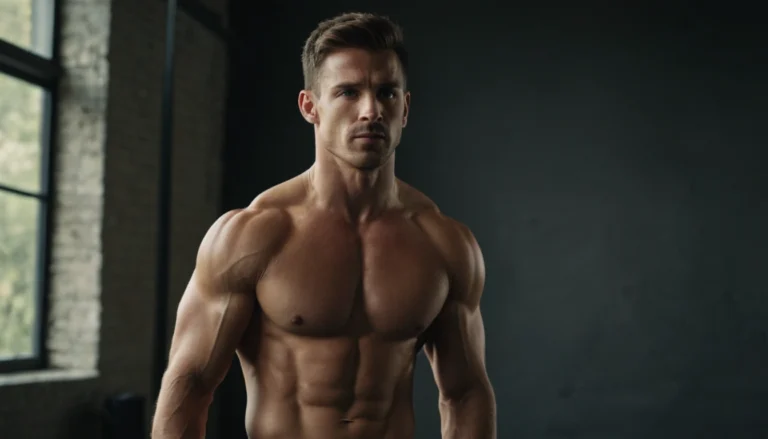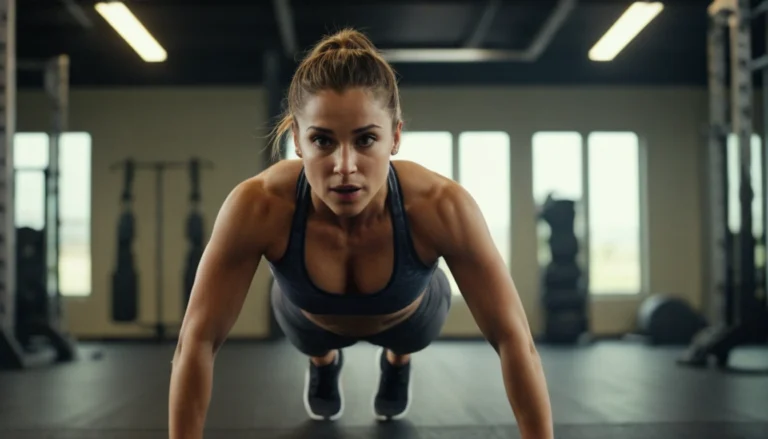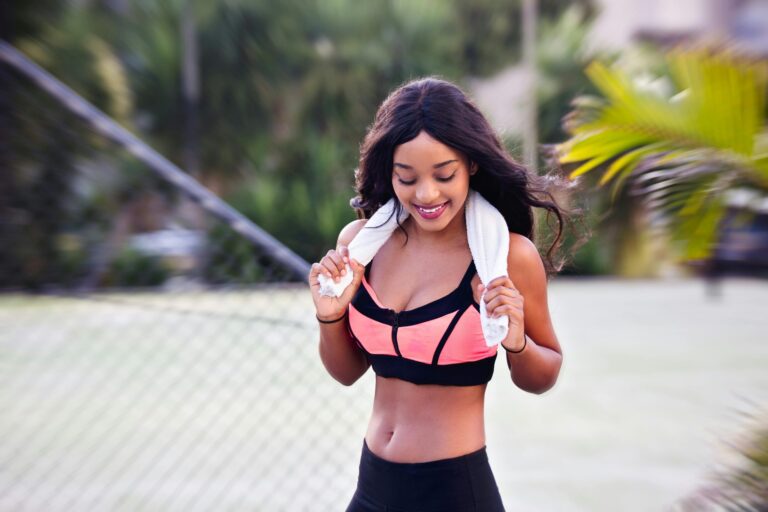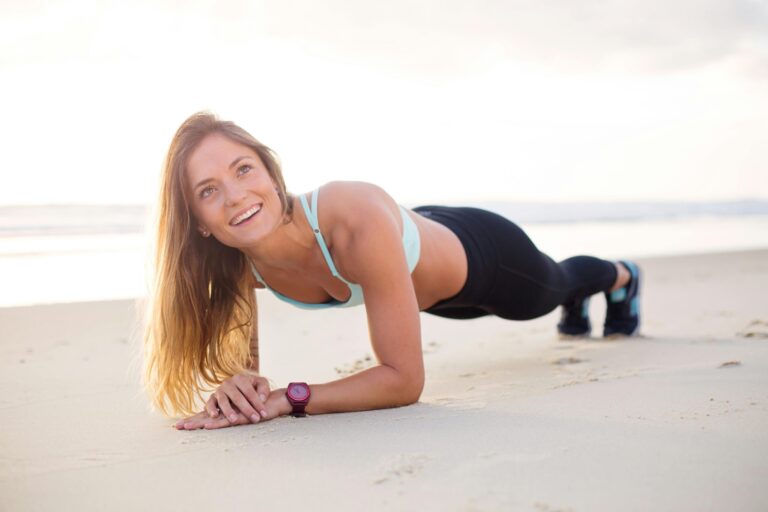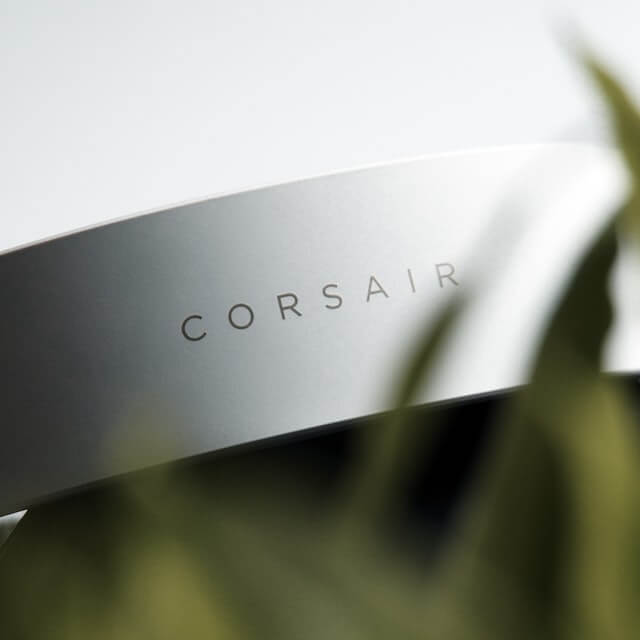This article will guide you through the best exercises to burn fat fast, focusing on high-intensity workouts, strength training, and cardio. These exercises suit various fitness levels, ensuring anyone can use them to maximize their fat-burning potential. We’ll cover detailed instructions, variations, and expert tips to help you see real results.
Burning fat quickly is a common fitness goal, and achieving it requires the right combination of exercise, intensity, and consistency. While diet plays a crucial role in reducing body fat, the right exercises can accelerate the process by boosting your metabolism and increasing the number of calories you burn throughout the day.
This article will guide you through the best exercises to burn fat fast, focusing on high-intensity workouts, strength training, and cardio. These exercises suit various fitness levels, ensuring anyone can use them to maximize their fat-burning potential. We’ll cover detailed instructions, variations, and expert tips to help you see real results.
By the end of this article, you’ll understand how to structure a workout that gets rid of fat quickly and effectively.
The Science Behind Fat Burning
Before diving into the exercises, it’s important to understand the basics of fat loss. The key to burning fat is creating a calorie deficit, meaning you burn more calories than you consume. This deficit forces your body to use stored fat as energy, leading to fat loss.
While any physical activity burns calories, certain exercises are more efficient at helping you burn fat, especially when performed at a high intensity. This is because high-intensity exercises elevate your heart rate and engage multiple muscle groups, leading to a higher calorie burn both during and after your workout due to a phenomenon called the afterburn effect.
The exercises outlined below are designed to elevate your heart rate, engage various muscle groups, and help you burn the most fat in the shortest amount of time.
1. Burpees: The Ultimate Fat-Burning Full-Body Workout
Burpees are one of the most effective full-body exercises for burning fat. This high-intensity movement combines cardio with strength training, working your legs, core, arms, and chest all at once.
- How to do it: Start in a standing position with your feet shoulder-width apart. Lower into a squat, place your hands on the ground, and jump your feet back into a plank position. Perform a push-up, then jump your feet back to your hands and explosively jump into the air, reaching your arms overhead.
- Why it works: Burpees are a high-intensity movement that elevates your heart rate quickly and works for multiple muscle groups, making them perfect for burning fat fast.
- Expert Tip: Keep your core tight during the plank and push-up phases to protect your lower back and maximize the efficiency of the movement.
Reps and Sets: Perform 3 sets of 12-15 burpees, resting for 30 seconds between sets.
2. High-Intensity Interval Training (HIIT): Maximize Fat Burning in Less Time
HIIT involves alternating between periods of high-intensity exercise and short periods of rest or lower-intensity exercise. This type of training is particularly effective for burning fat because it keeps your heart rate elevated for longer periods and increases the number of calories you burn in a shorter time.
HIIT Workout Example:
-
Exercise 1: 30 seconds of jump squats
-
Exercise 2: 30 seconds of mountain climbers
-
Exercise 3: 30 seconds of high knees
-
Rest: 30 seconds between each exercise
-
Repeat: 4-5 rounds
-
Why it works: HIIT workouts are extremely effective for fat loss because they create an afterburn effect, where your body continues to burn calories for hours after the workout is over.
-
Expert Tip: Push yourself during the high-intensity phases but make sure to rest adequately during the low-intensity periods to recover for the next round.
Duration: Perform 20-25 minutes of HIIT, including warm-up and cool-down.
3. Jump Rope: One of the best Exercises to Burn Fat
Jumping rope is one of the simplest yet most effective ways to burn fat. It’s a great cardiovascular exercise that engages the legs, core, and arms while significantly increasing your heart rate.
- How to do it: Hold the jump rope handles in each hand and position the rope behind you. Swing the rope over your head and jump over it with both feet. Continue jumping at a steady pace.
- Why it works: Jumping rope can burn up to 10 calories per minute and improves cardiovascular endurance while working your entire body, making it an excellent fat-burning exercise.
- Expert Tip: Start with shorter intervals of 30-60 seconds and gradually increase your jumping time as your endurance improves.
Reps and Sets: Perform 5 sets of 60-second intervals, resting for 30 seconds between sets.
4. Kettlebell Swings: A Dynamic Full-Body Exercise for Fat Loss
The kettlebell swing is a powerful exercise that combines strength training with cardiovascular benefits. This movement targets your legs, glutes, core, and upper body, making it an ideal exercise for fat-burning and building lean muscle.
- How to do it: Stand with your feet shoulder-width apart, holding a kettlebell with both hands. Hinge at your hips, allowing the kettlebell to swing between your legs, then drive your hips forward to swing the kettlebell up to chest height.
- Why it works: Kettlebell swings engage multiple muscle groups at once, which increases your heart rate and burns more calories than isolated exercises.
- Expert Tip: Focus on using your hips to power the swing, not your arms. Keep your back straight to avoid injury.
Reps and Sets: Perform 3 sets of 15-20 swings.
5. Mountain Climbers: Engage Your Core While Burning Calories
Mountain climbers are a fast-paced exercise that targets your core while also working your arms, shoulders, and legs. This movement is effective for fat loss because it keeps your heart rate elevated and engages multiple muscle groups.
- How to do it: Start in a plank position with your hands directly under your shoulders. Drive one knee toward your chest, then quickly switch legs, alternating in a running motion.
- Why it works: Mountain climbers are a high-intensity cardio exercise that engages your core, burns calories, and builds endurance all at once.
- Expert Tip: Keep your hips low and your core engaged to ensure proper form and maximize calorie burn.
Reps and Sets: Perform 3 sets of 30-45 seconds of mountain climbers, resting for 15-20 seconds between sets.
6. Sprint Intervals: Accelerate Fat Burning with Explosive Speed
Sprinting is one of the most effective ways to burn fat quickly. By incorporating sprint intervals into your workout routine, you can burn a significant number of calories in a short amount of time and increase your metabolism.
- How to do it: Sprint at full speed for 20-30 seconds, then walk or jog for 1-2 minutes to recover. Repeat for 6-8 rounds.
- Why it works: Sprint intervals are highly effective for fat loss because they require short bursts of maximum effort, which increases your heart rate, improves cardiovascular health, and stimulates the afterburn effect, where your body continues to burn calories after your workout.
- Expert Tip: Always warm up properly before performing sprints to prevent injury. Focus on explosive power during the sprint and active recovery during the walking intervals.
Duration: Perform sprint intervals for 20-25 minutes, including a warm-up and cool-down.
7. Jump Squats: Explosive Power for Maximum Fat Burn
Jump squats are an advanced variation of the traditional squat that adds an explosive movement, increasing the intensity and calorie burn. This exercise engages your lower body muscles, especially your quads, hamstrings, and glutes, while also raising your heart rate.
- How to do it: Start in a standing position with your feet shoulder-width apart. Lower into a squat, keeping your knees behind your toes. Push through your heels to jump explosively into the air, then land softly and immediately lower into another squat.
- Why it works: Jump squats engage multiple muscle groups and increase your heart rate, making them a great exercise for burning fat and building lower body strength.
- Expert Tip: Focus on landing softly to protect your knees and maintain control throughout the movement.
Reps and Sets: Perform 3 sets of 12-15 jump squats, resting for 30 seconds between sets.
8. Cycling: A Low-Impact, High-Calorie Burning Cardio Workout
Cycling, whether on a stationary bike or outdoors, is an excellent cardio exercise that can burn a large number of calories and improve cardiovascular health. It’s also a low-impact exercise, making it easier on the joints than running or jumping.
- How to do it: Start by pedalling at a steady pace for 5-10 minutes to warm up. Increase your speed and resistance to a challenging level for 1-2 minutes, then return to a lower intensity for 2-3 minutes to recover. Repeat for 20-30 minutes.
- Why it works: Cycling is effective for fat loss because it raises your heart rate and can be performed for longer durations, allowing you to burn a significant number of calories.
- Expert Tip: Vary the resistance and speed during your cycling session to engage different muscle groups and keep your body challenged.
Duration: Perform cycling for 30-40 minutes, alternating between high and low-intensity intervals.
9. Rowing: Full-Body Cardio That Torches Calories
Rowing is a full-body cardio exercise that targets your legs, core, and upper body. It’s an excellent exercise for burning fat because it combines strength training with cardiovascular conditioning, helping you build muscle while shedding fat.
- How to do it: Sit on the rowing machine with your feet strapped in and your hands gripping the handle. Push off with your legs, then lean back slightly as you pull the handle toward your chest. Reverse the motion by extending your arms and bringing your legs back in.
- Why it works: Rowing engages multiple muscle groups, providing a full-body workout that burns calories and improves cardiovascular fitness.
- Expert Tip: Focus on maintaining good form throughout the row to prevent injury and maximize your results.
Duration: Aim for 20-25 minutes of steady rowing.
10. Box Jumps: Build Strength and Burn Fat
Box jumps are a plyometric exercise that involves jumping onto a sturdy platform, such as a box or step. This explosive movement engages your legs, glutes, and core, while also raising your heart rate for a serious calorie burn.
- How to do it: Stand in front of a box or step with your feet shoulder-width apart. Lower into a squat, then jump explosively onto the box, landing softly with both feet. Step down carefully and repeat.
- Why it works: Box jumps are an explosive movement that burns a significant number of calories and builds lower body strength.
- Expert Tip: Start with a lower box if you’re a beginner, and focus on landing softly to protect your joints.
Reps and Sets: Perform 3 sets of 10-12 box jumps, resting for 30 seconds between sets.
FAQs
Q1: How often should I do fat-burning exercises to see results?
To see optimal results, aim to perform fat-burning exercises 4-5 times per week. Consistency is key to losing fat, improving cardiovascular health, and maintaining a lean physique.
Q2: Can I do fat-burning exercises at home without equipment?
Yes, many of the exercises listed, such as burpees, mountain climbers, and jump squats, require no equipment and can be done at home. If you have access to equipment like dumbbells or a jump rope, you can add even more variety to your workouts.
Q3: What should I eat to maximize fat loss?
For best results, focus on a balanced diet that includes lean proteins, healthy fats, and complex carbohydrates. Also, ensure you’re in a slight calorie deficit, meaning you’re consuming fewer calories than you’re burning.
Q4: How long does it take to see fat loss results?
The time it takes to see results varies based on factors like diet, exercise intensity, and individual metabolism. However, with a consistent workout routine and proper nutrition, you can typically expect to see results within 4-6 weeks.
Q5: Can I combine fat-burning exercises with strength training?
Absolutely! Combining fat-burning exercises with strength training can increase your muscle mass, which boosts your metabolism and helps you burn more fat over time.
The best exercises to burn fat fast are those that challenge your body, elevate your heart rate, and engage multiple muscle groups. Whether you choose HIIT, sprints, or strength training exercises like kettlebell swings and box jumps, consistency and intensity are key to seeing results. Remember, creating a calorie deficit by combining exercise with a healthy diet is the most effective way to lose fat and achieve your fitness goals.
